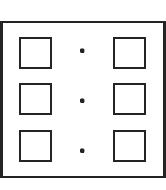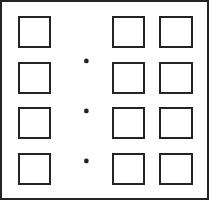Intelligent reflecting surface (IRS) is a new promising technology that is able to reconfigure the wireless propagation channel via smart and passive signal reflection. In this paper, we investigate the capacity region of a two-user communication network with one access point (AP) aided by $M$ IRS elements for enhancing the user-AP channels, where the IRS incurs negligible delay, thus the user-AP channels via the IRS follow the classic discrete memoryless channel model. In particular, we consider two practical IRS deployment strategies that lead to different effective channels between the users and AP, namely, the distributed deployment where the $M$ elements form two IRSs, each deployed in the vicinity of one user, versus the centralized deployment where all the $M$ elements are deployed in the vicinity of the AP. First, we consider the uplink multiple-access channel (MAC) and derive the capacity/achievable rate regions for both deployment strategies under different multiple access schemes. It is shown that the centralized deployment generally outperforms the distributed deployment under symmetric channel setups in terms of achievable user rates. Next, we extend the results to the downlink broadcast channel (BC) by leveraging the celebrated uplink-downlink (or MAC-BC) duality framework, and show that the superior rate performance of centralized over distributed deployment also holds. Numerical results are presented that validate our analysis, and reveal new and useful insights for optimal IRS deployment in wireless networks.
翻译:智能反射表面(IRS)是一种有希望的新技术,它能够通过智能和被动信号反射来重新配置无线传播频道。在本文件中,我们调查了两个用户通信网络的能力区域,一个用户通信网络有一个接入点(AP),由IM美元部分协助加强用户-AP频道,IRS产生微小的延迟,因此通过IRS的用户-AP渠道遵循传统的离散记忆无记忆通道模式。特别是,我们认为,两种实用的IRS部署战略导致用户和AP之间不同有效渠道,即美元要素组成两个IRS的分布式部署,每个在一个用户附近部署的IM美元部分,而所有M美元部分都部署在AP附近的集中部署。首先,我们考虑多接入频道(MAC)的升级连接,并获取不同多访问计划下部署战略的能力/可实现率区域。我们发现,中央部署战略部署的有用性优于在可实现用户比率的平调频道下部署。接下来,我们将部署最佳部署网络的结果扩展到了BC的双向下流,并且通过对BC的交付率进行最佳的升级。







